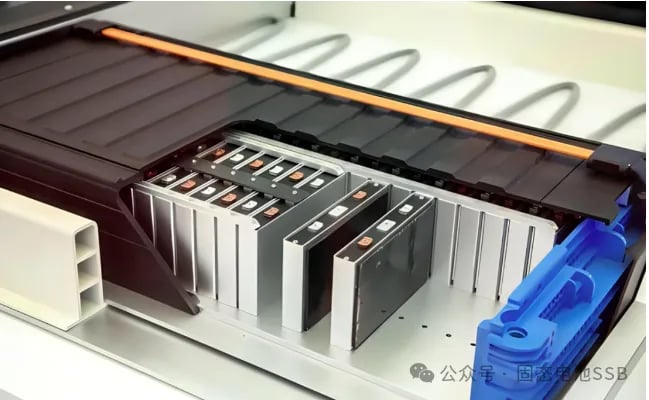The development of all-solid-state batteries began in the 1970s. Only later, with the technological innovation and large-scale commercial use of lithium-ion batteries in the early 2000s, the industry's attention to all-solid-state batteries has declined. Thirty years to the east, thirty years to the west, a new round of battery innovation cycle may be opened in 2030.
Compared with liquid batteries, the core change of solid-state batteries is the introduction of solid electrolytes. According to the material type of solid electrolyte, the current solid state battery mainly includes oxides, sulfides, polymers and halides and other technical routes, and each route has its own advantages and disadvantages. For example, the oxide has high safety, but its easy brittleness leads to its complicated preparation process; Sulfide has high ionic conductivity, but the air stability is poor and H2S toxic gas is formed, and the cost is high. The polymer is relatively soft, the solid contact is the best, but the conductivity is low; However, halides are still mainly in the laboratory research stage.
The whole industry placed the hope of the "next generation battery" on solid-state batteries, and even believed that this is the terminator of liquid lithium batteries, mainly due to the perfect properties of solid-state batteries.
First, high security.Secondly, the energy density of all-solid-state batteries should also exceed that of liquid batteries, and the theoretical upper limit can reach 500 Wh/kg.Thirdly,Increased energy density means increased endurance.Lastly, the ion conduction mode of the liquid battery needs to go through solvation, desolvation and other processes, and the charging power is therefore limited.
However, good all have a price, so far no manufacturer can produce solid-state batteries on a large scale, which actually reflects the difficulty of high.Since solid-state batteries still have so many challenges, why are so many companies insisting on developing solid-state batteries?
1.the product characteristics of solid-state batteries can solve the safety and mileage anxiety of current new energy vehicle users
Due to the use of non-flammable, high and low temperature non-vaporization and non-solidification of solid electrolyte, solid-state batteries show strong high temperature safety, and maintain good low temperature characteristics to avoid low temperature battery life greatly reduced; In addition, solid-state batteries, due to their higher voltage window, can be further adapted to high-capacity positive and negative materials, such as lithium-rich manganese anode, silicon-based negative electrode and lithium metal negative electrode, so as to achieve higher energy density and increase the battery life under the same power.
2.In the context of global competition for new energy vehicles, the competition for solid-state batteries is being staged around the world
In the face of the industrial advantages formed by China in the development of global new energy vehicles, especially in the field of power batteries, which makes countries in Europe and the United States that need to transition to new energy urgently need to find new solutions, so the research and development of solid-state batteries has risen to become the national strategy of major countries in the world. For example, Japan is making national efforts to develop sulfide solid-state batteries, and strive to achieve 450Wh/L and 6C (@25 ° C) by 2027; The EU has also built a complete battery system from policy, innovation, and business, and plans to achieve polymer or composite solid-state batteries to break through 400-500Wh/kg and 800-1000+Wh/L during 2027-2030. The United States DOE plans to develop a solid-state battery in 2030 in 2021, with a production cost of less than $60 /kWh and an energy density of 500Wh/kg; Based on its K-Battery strategy, South Korea has also explicitly invested 40.6 trillion won to promote the commercial use of 400Wh/kg solid-state batteries in 2025-2028 and the loading of vehicles in 2030; China also set up the solid-state battery industry innovation consortium and the all-solid-state battery industry-university-research collaborative innovation platform in this half year to accelerate the breakthrough of (all) solid-state batteries and maintain the leading edge.

